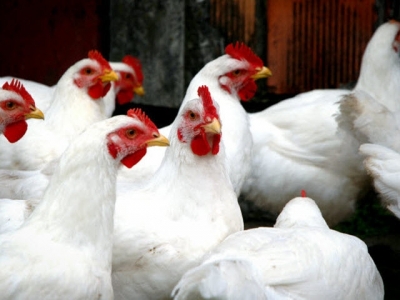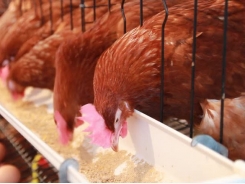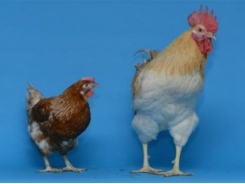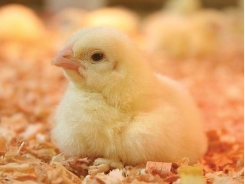Reducing feed phosphate cost for laying hens

Enzyme benefits offer the potential to formulate with degraded specifications without impacting performance.
High feed ingredient prices in 2008 created a challenge for nutritionists and impacted profit. Elevated phosphate prices were attributed to a shortage caused by increased demand for fertilizer, shortage of sulfuric acid and the cost of energy needed to produce defluorinated phosphorus. Although cost has declined since the $900/ton high, current prices are above traditional levels.
A number of articles have indicated potential approaches to reduce phosphate cost including formulation with a reduced available phosphorus (avP) specification, using alternative ingredients and supplementing diets with phytase enzymes.
Time for re-evaluation
Re-evaluation of available phosphorus specification: Nutritionists have traditionally included a margin of safety for critical nutrients to compensate for potential deficiencies due to variation in ingredient quality or uniformity in mixing. The amount by which dietary avP level can be reduced below the recommendations of the breeder of the leading egg producing strain (0.5% dietary avP, assuming 22lb/100 hens at peak) and still meet requirements depends on a number of factors.
These include the risk adversity of the nutritionist, production level, age and health status of flocks, prevailing climatic conditions and quality standards. If avP specification is lowered an incremental approach is recommended and production parameters and shell quality must be monitored in relation to dietary intake.
Re-evaluation of nutrient levels of ingredients: The avP matrix values of ingredients should be re-evaluated and adjusted as needed.
Using alternative ingredients
Byproducts: Incorporating animal or poultry byproducts in diets may reduce cost per ton of feed depending on availability and average unit cost of nutrients. Individual ingredients can be evaluated by parameterization or can be offered at incremental cost values in order to select an optimal inclusion level in a formula.
DDGS: Including Dried Distiller Grains with Solubles (DDGS) in layer feeds provides an opportunity to reduce cost based on the avP content of 0.55% compared to corn at 0.09%. Nutrient content can vary among ethanol production plants, requiring a quality assurance program. Currently many nutritionists routinely incorporate between 8% and 12% DDGS in layer diets.
Phytase enzymes: Approximately 70% of the phosphate in vegetable ingredients occurs in the phytin or phytic acid form which is unavailable to poultry. Supplementing diets with a phytase enzyme additive will lower feed cost by releasing available phosphorus from the non-absorbed bound form. This reduces the need to add mineral-source phosphate. The selection and inclusion level of phytase should be based on the manufacturer’s recommendations. Commercial phytase preparations derived from solid state fermentation have significant side enzyme activity including xylanase, cellulase and protease, enhancing the availability of energy and critical amino acids as an additional benefit.
Performace at a lower cost
Although feed phosphate and other ingredient prices have moderated since 2008, it is inevitable that costs will increase as the world economies recover from recession. Diversion of corn to ethanol, increased purchases of corn and soybeans by Asian nations, droughts disrupting supply and escalation in the cost of crude oil will all result in higher feed costs. Strategies outlined in this article have the potential to reduce production cost. The nutritional benefits of enzymes in relation to their cost offer the potential to formulate with degraded specifications or alternatively increased nutrient values of ingredients, without impacting performance.
About Author: Dr. Heather Stilborn earned her Ph.D. in nutrition from the University of Arkansas. She has over 20 years experience in poultry nutrition and has functioned as a technical advisor for companies marketing amino acids, additives and premixes in addition to providing formulation services
Related news
Tools

Phối trộn thức ăn chăn nuôi

Pha dung dịch thủy canh

Định mức cho tôm ăn

Phối trộn phân bón NPK

Xác định tỷ lệ tôm sống

Chuyển đổi đơn vị phân bón

Xác định công suất sục khí

Chuyển đổi đơn vị tôm

Tính diện tích nhà kính

Tính thể tích ao



 10 ideas that will change poultry nutrition and…
10 ideas that will change poultry nutrition and…  Backyard Flock Tip: Egg Laying Behavior
Backyard Flock Tip: Egg Laying Behavior